This lesson will focus on finding the angle between two given lines, given their slopes (or equations).
Suppose we have two lines whose slopes are known, say m1 and m2. Then, how can we find the angle between these lines?
In other words, given the angles made by the lines with the X-axis, how can we find the angle made by the lines with each other?
Take a look at the figure below. Can we find θ in terms of θ1 and θ2?

Turns out it’s pretty simple to do that. Using the exterior angle property in the triangle above, we have:
θ = θ1 – θ2
Then,
tanθ = tan(θ1 – θ2)
⇒ tanθ = (tanθ1 – tanθ2)/(1 + tanθ1tanθ2)
Now, on replacing tanθ1 and tanθ2 by m1 and m2 respectively, we get:
tanθ = (m1 – m2)/(1 + m1m2)
And, we’re done. We related the angle between the two lines (θ) with the slope. That is, given the slopes, we can get the value of tanθ (and hence θ).
A small note. The expression on the RHS will change its sign depending upon whether we take m1 as the slope of the first line or the second.
For example, if m1 = 1/2 and m2 = -1/3, then tanθ comes out to be 1, which means θ = 45°. But if we take m1 as -1/3 and m2 as 1/2, then tanθ would come out to be -1, which means θ = 135°.
Geometrically, the two different angles represent the same situtation with respect to the lines. Take a look.

So, we needn’t worry about this issue much. But to keep things clean, we use a modulus sign on the previous expression (on the RHS).
This will always give a positive value of tanθ (i.e., θ will always be an acute angle). The final formula looks something like this:
tanθ = |(m1 – m2)/(1 + m1m2)|
Lesson Summary
- The angle (θ) between two lines, whose slopes are m1 and m2 is given by tanθ = |(m1 – m2)/(1 + m1m2)|.
In the next lesson, I’ll talk about the relation between the slopes of parallel and perpendicular lines.